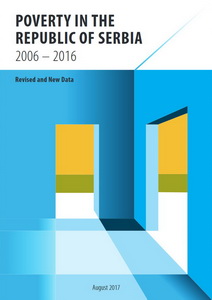 The Social Inclusion and Poverty Reduction Unit of the Government of the Republic of Serbia is publishing, in line with its mandate, the data on the movement of the absolute poverty and inequality in the Republic of Serbia for the period 2006 – 2016.
The Social Inclusion and Poverty Reduction Unit of the Government of the Republic of Serbia is publishing, in line with its mandate, the data on the movement of the absolute poverty and inequality in the Republic of Serbia for the period 2006 – 2016.
The Statistical Office of the Republic of Serbia, as the competent institution, has performed the data analysis.
According to the recommendation of the European Statistical Agency – Eurostat, since 2015, the Statistical Office of the Republic of Serbia has been using the Classification of individual consumption by purpose on the five-month basis, instead of the previously used four-month basis. These changes affected the data calculated in previous years, which is why the Statistical Office of the Republic of Serbia had to revise the data on the movement of individual consumption for the period 2009 – 2014.
Even though the new methodology and the performed audit influenced the modification of the data, the overall conclusions about the level of vulnerability, the primary vulnerability factors and the profile of the poor remained unchanged when compared to the previous data.
Poverty remained significant throughout the observed period and there is no positive downward trend. About half a million inhabitants are unable to meet minimum existential needs, and the most vulnerable are the ones living outside urban centres, especially in the region of South and East Serbia, households where the head of the family has a low level or has no education, or he/she is unemployed or inactive. Households with a large number of members and households with children are particularly vulnerable.
In 2016, the Poverty Line was RSD 11,694 a month per a consumer unit, while 7.3% of the population in Serbia consumed less than this amount.
Given the extent of the absolute poverty, it is crucial that this is regularly monitored and reported on, as well as that appropriate policies are being established.
 Government of the Republic of Serbia
Government of the Republic of Serbia















 pdf [271 KB]
pdf [271 KB]
Leave a Comment